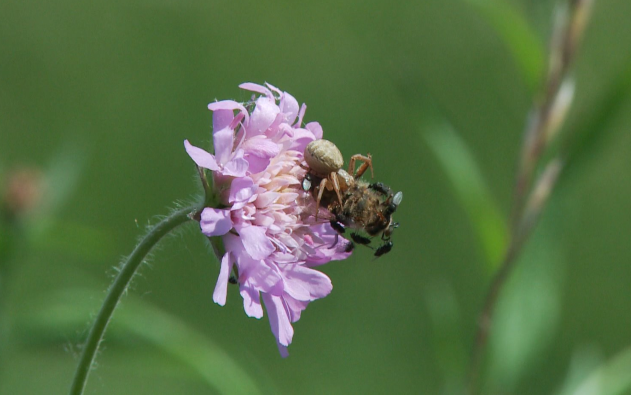Trophic interactions
Plant-consumer interactions as cause and consequence of long-term BEF relationships

Jena
Principle Investigator
+49 3641 9-49437

Freising
Principle Investigator
+49 8161 71 4219

Jena
PhD student

Consumers (heterotrophic organisms, mostly animals) are important drivers of plant community assembly and diversity and providers of ecosystem functions that transfer matter and energy from primary producers to higher trophic levels. Consumer communities have been shown to be affected by plant diversity with consequent changes in the consumer related ecosystem functions. These relationships can change over time as plant, soil, and consumer community assembly in aging biodiversity experiments. Such changes might, in turn, feedback to the plant community.

Aboveground consumers are strongly bottom-up controlled in the Jena Experiment. Therefore, the documented changes in soil- and plant communities over time (coordination proposal) are expected to have cascading effects on higher trophic levels. In the proposed project, we will investigate consumer communities and their functions as a whole (community level) as well as plant species-specific consumer interactions (species level), their relationship to plant diversity and the change in these relationships over time. For the first time, we will address different trophic groups in these analyses. The proposed project is structured in three work packages. First, we will evaluate temporal changes in plant diversity effects on aboveground consumers and functions at the community level, and interactions with plant- and soil history. Second, we will explore mechanisms driving temporal changes in plant diversity effects on aboveground consumer communities and community-level functions. Third, we will assess feedback effects of aboveground consumers and associated functions on plant performance and how changes in BEF relationships over time can be linked to these feedbacks.
The proposed consumer feedback effects and their temporal dynamics are particularly important, because temporal changes in these feedbacks could be another mechanism contributing to strengthening diversity effects on plant community performance over time.
